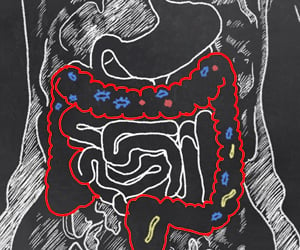Black men with university degrees and no spouse face a heightened risk of death from heart disease, prostate cancer, stroke, diabetes, kidney disease, and homicide.

Inequalities in lifespan and mortality risk in the US, 2015-2019: a cross-sectional analysis of subpopulations by social determinants of health
Go to source). But a simple scoring system based on these characteristics can help overcome this complexity to identify those most at risk, say the researchers.
‘White men with a high school diploma or less, who’ve never married have a partial #lifeexpectancy of just 37 years. #healthinequality #socialdeterminantsofhealth’





Social Factors: The Bigger Picture of Health
Individual risks and genetic factors explain part of the differences in health and death, but the evidence increasingly points to the role of social determinants—the conditions in which people are born, grow, live, work and age—in shaping health, explain the researchers.But when it comes to identifying those groups at high risk of early death, using only one of these factors often masks wide lifespan inequalities within these groups, and various factors influence health in different ways, making it difficult to identify a person at risk, they add.
To better understand how these inequalities act in tandem with one another, and to identify people at high risk of an early death from all, and specific, causes more accurately, the researchers looked at lifespan differences associated with 4 key social determinants, with the aim of drawing up a scoring system.
They extracted information on registered deaths and population numbers from national statistics and census data for the period 2015-19, to analyse the potential influence of all combinations of sex, race, marital status, and education level on the risk of early death—54 different groups in total.
They included 12 specific causes of death, representing the 11 leading causes of death in the US, to include homicide and lung, breast, prostate, and other cancers.
Advertisement
At the other end of the scale, White married women with a university degree can expect to clock up 55 years in partial life expectancy.
Advertisement
For example, university educated White married men have a partial life expectancy of 52 years, which is higher than that of 81% of all the female groups (22 out of 27). Similarly, some groups with low educational attainment outlive some with high educational attainment.
And married Hispanic women educated to high school level or below have a partial life expectancy of 51 years, which is higher than 44% of the groups characterised by a university degree (8 out of 18).
And a characteristic that curtails partial life expectancy can be offset by a characteristic that extends it, and vice versa, say the researchers.
For example, education to high school level or below reduces partial life expectancy by nearly 4 years, but being married and female increases it by almost 5 years, bringing the life expectancy of married women with this level of educational attainment above the national level.
And while a university degree extends partial life expectancy by nearly 4 years, never being married and of male sex shortens it by nearly 5 years, bringing it below the national level.
Based on these findings, the researchers developed a scoring system, ranging from −10 to a maximum of 8, for identifying groups at high risk of early death across the 4 social determinants of health.
Being female (score of 4), and married (0), White (1) and educated to high school level or less (−5) yields a total score of 0. Around half of the 54 groups score 0 or above and nearly 1 in 5 (19%) −5 or lower.
While not everyone in low scoring groups will die early, people in these groups might be at heightened risk, and so might need more medical or public health interventions, explain the researchers.
Marriage and higher educational attainment are two characteristics that always confer lower risk, but the gradient isn’t as obvious for race. Some specific causes of death, such as suicide, unintentional injuries, chronic lung disease and lung cancer adversely affect more Whites, while others, such as liver disease, adversely affect more Hispanics.
Most causes of death tend to adversely affect Blacks across the board. And women generally have a survival advantage over men for all causes of death, except for other cancers and Alzheimer's disease.
But different social determinants of health affect each cause of death differently, as a result of which, the causes of death contributing to the mortality disadvantage vary across the 54 groups, even if the overall score is the same, the researchers found.
For example, White previously married women with a high school degree or less are at high risk of dying from lung cancer, other cancers, chronic lung disease, Alzheimer’s disease, kidney disease, and influenza and pneumonia.
The researchers acknowledge that the scoring system could oversimplify underlying factors at play. Marital status is also prone to change. And including more characteristics, such as income, residential area, environmental factors, access to healthcare, or lifestyle could enhance the scoring system’s precision, they suggest.
But they nevertheless conclude: “There is a complex interaction between social and individual determinants of health, with no one determinant explaining the full observed variation in lifespan.
“Having one characteristic that is associated with higher mortality is often not a sufficient criterion to be considered at high risk of mortality, but the risk does increase with the number of such characteristics. In addition, not all analysed social determinants of health have the same degree of influence on lifespan and mortality.”
Reference:
- Inequalities in lifespan and mortality risk in the US, 2015-2019: a cross-sectional analysis of subpopulations by social determinants of health - (https://bmjopen.bmj.com/content/14/6/e079534)
Source-Eurekalert











